IS-IS Protocol Basics:
IS-IS is an Interior Gateway Protocol (IGP) used for routing within Autonomous Systems (AS) in IP networks. It operates on the link-state routing algorithm where routers exchange link-state information to build a complete topology of the network.
Integration of IS-IS with Segment Routing:
IS-IS Segment Routing extends the IS-IS protocol to support segment routing capabilities by introducing new TLVs (Type-Length-Value) for carrying segment routing information within IS-IS protocol packets. This includes the concept of Segment IDs (SIDs) to represent various types of segments like node SIDs and adjacency SIDs.
Node/Prefix SID:
- Represents a specific router (node) in the network.
- Utilizes the SR Global Block (SRGB), unique within the SR domain.
- Prefix-SID can be configured manually as an absolute value or index under the IGP-enabled loopback interface.
- Prefix-SID is always advertised as a globally unique index.
- Node segment is a Prefix segment associated with a host prefix that identifies a node (prefix-SID with N-flag set in advertisement).
- By default, each configured prefix-SID is a node-SID.
- Prefix-SID can be configured with explicit-Null and no-PHP Flags (by default PHP is enabled)
Adjacency SID:
- Represents a specific link (adjacency) between two nodes.
- Allocated locally from a dynamic label pool and assigned automatically for each ISIS adjacency.
- Always represented as an absolute value (not indexed).
Implementation/Configuration of ISIS-SR and Validation
Topology: Five routers considered with assigned loopback IP addresses and prefix-SID index values
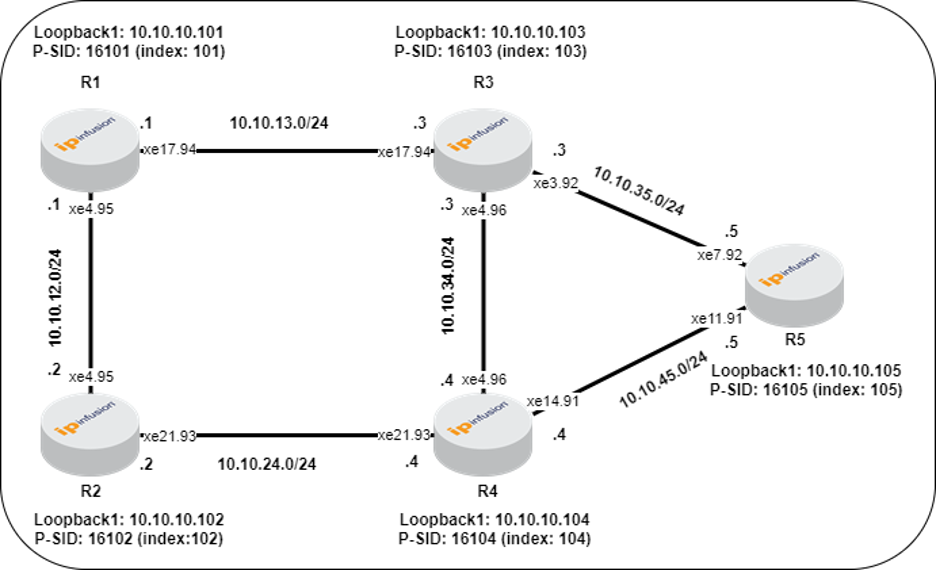
Sample configuration from R1 device:
Loopback interface configuration:

Sets up Prefix-SID under the loopback.
Physical interface configuration:
Note: Sub-interface is used for IGP neighborship, although we can use main interface as well.

Enables “label-switching” with network type “point-to-point” (can be broadcast also) and configures ISIS process “OCNOS” under the interface.
Router ISIS configuration:
Note: metric-style wide, traffic engineering for respective level is mandatory to enable SR MPLS under ISIS.
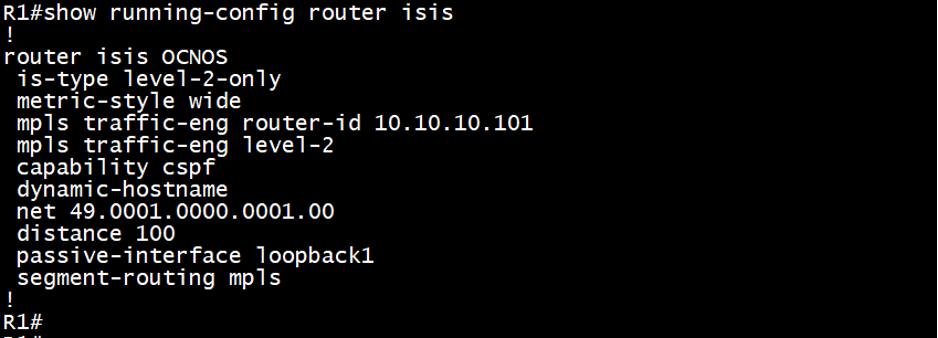
Validation Steps:
Check the ISIS neighborship:

Verifies ISIS neighborship status, outgoing interface, and type.
Check the ISIS neighborship detail:
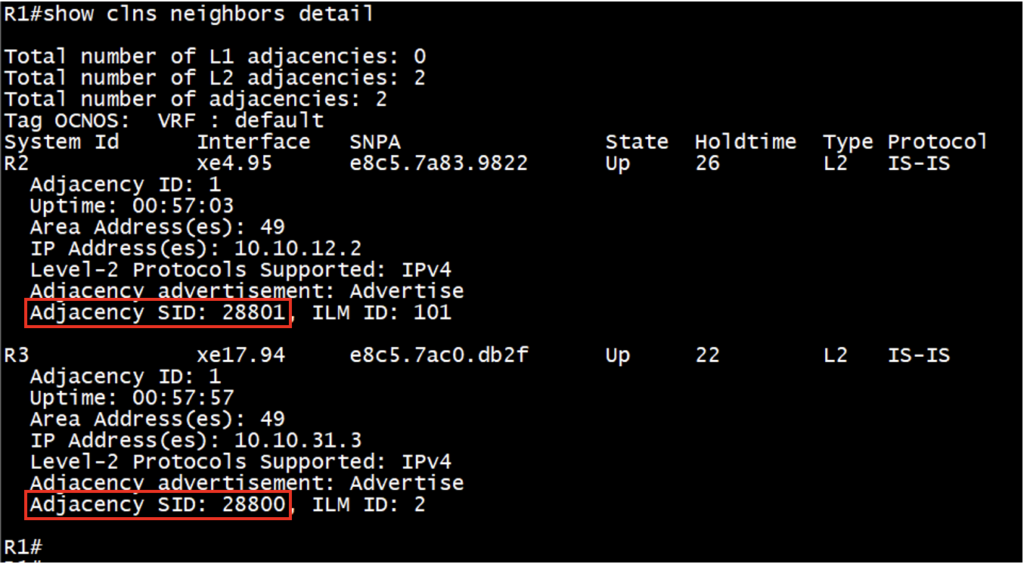
Provides additional details like uptime and adjacency SID.
Check the ISIS topology:

Displays topology details including metrics and next-hop.
Check the ISIS routes:
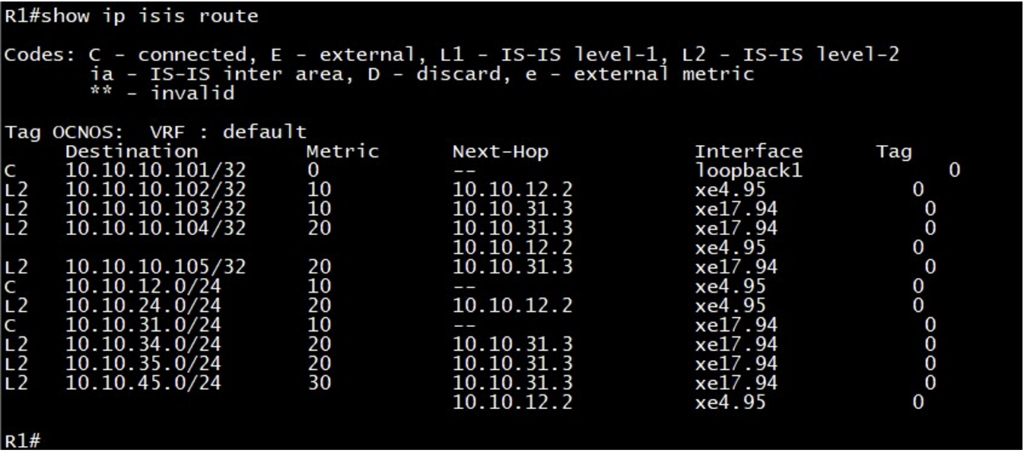
Examines ISIS routes with associated metrics and next-hop details.
Check the ISIS SR state:

Verifies ISIS-SR state and used SRGB on the router.
Check the ISIS SR capabilities of routers in the network:
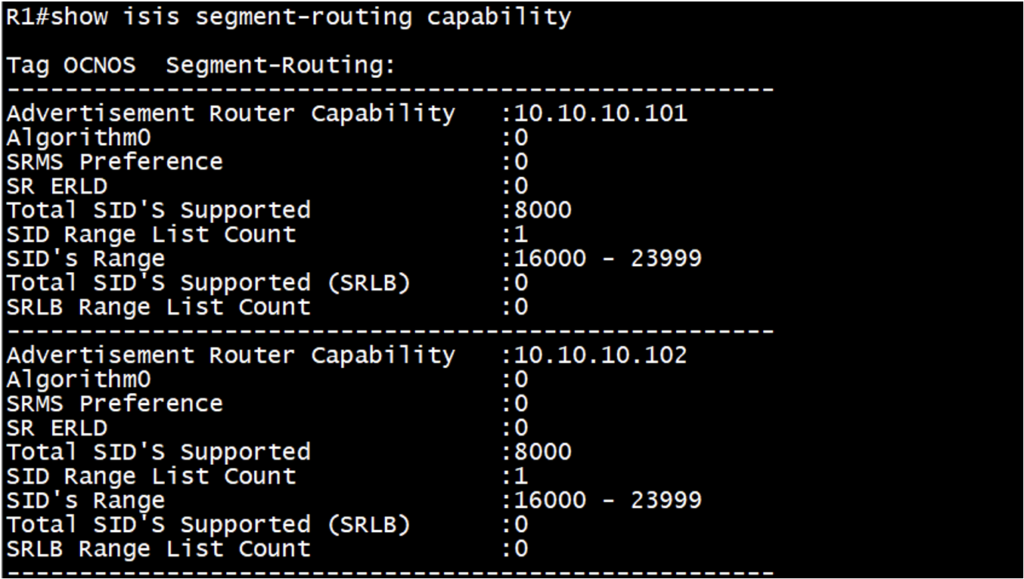
Identifies ISIS-SR capable routers in the network and their respective SRGB.
Check the ISIS database:

Verifies the ISIS-SR database.
Check the ISIS database verbose:
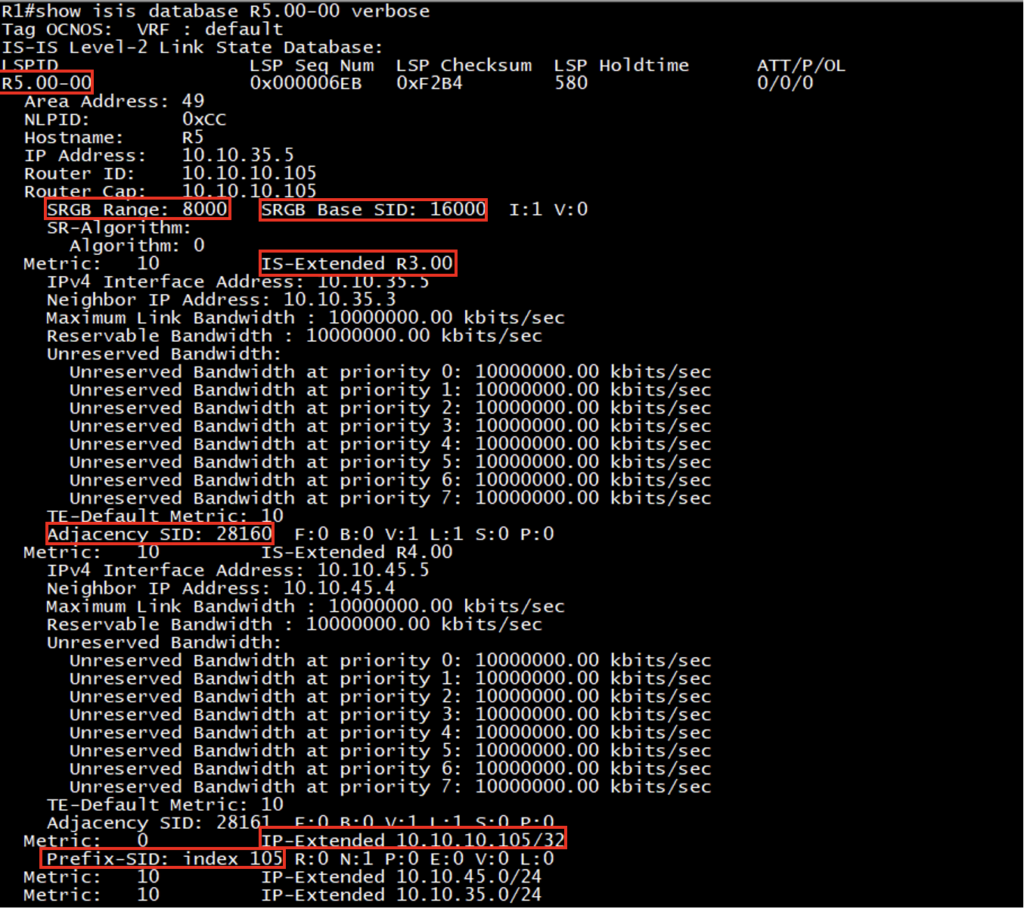
Provides detailed ISIS-SR database information including SRGB, Prefix-SID, and Adjacency SID.
Check the MPLS forwarding-table (FTN) entries in software (NSM):


Ensure the MPLS Forwarding-table (FTN) entries installed for the loopback addresses of all routers in the network. This command provides details such as the outbound label (out-label), outbound interface (out-interface), next-hop, and more. It is essential to perform this check on the source router.
Check the MPLS ILM-table entries in software (NSM):
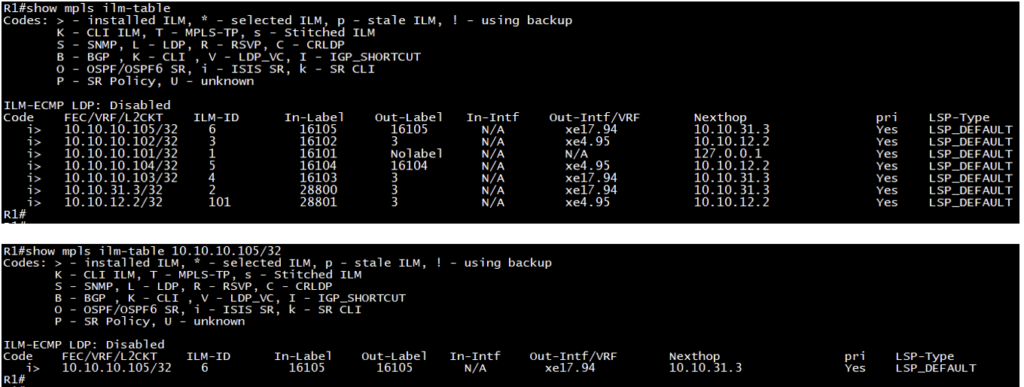
Ensure the MPLS ILM-table (Incoming Label Mapping Table) entries installed for the loopback addresses of all routers in the network and the local links next-hop IP address. This command provides details such as the inbound label (in-label) outbound label (out-label), outbound interface (out-interface), next-hop, and more. It is essential to perform this check on the transit router.
Check the MPLS ping and trace:
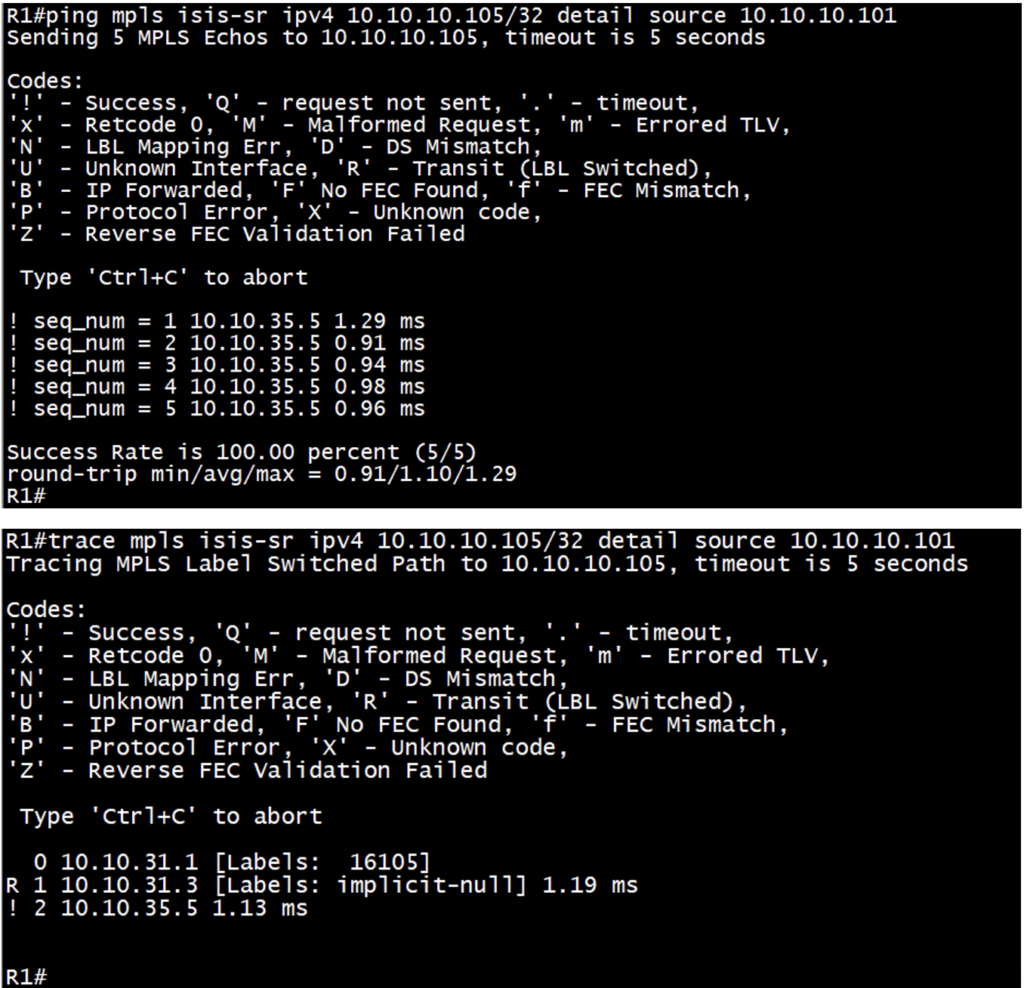
Troubleshoots network connectivity using MPLS ping and trace commands.
Advanced Troubleshooting (Hardware Level): If issues persist:
Check the MPLS FTN entries in hardware (HSL):

Records “fec”, “lsp_encap”, and “ll_encap” for respective FTN on source router.
Check the MPLS ILM entries in hardware (HSL):

Records “fec”, “lsp_encap”, and “ll_encap” for respective ILM on transit router.
Check the MPLS FEC entries for respective FTN & ILM entries from above HSL output:
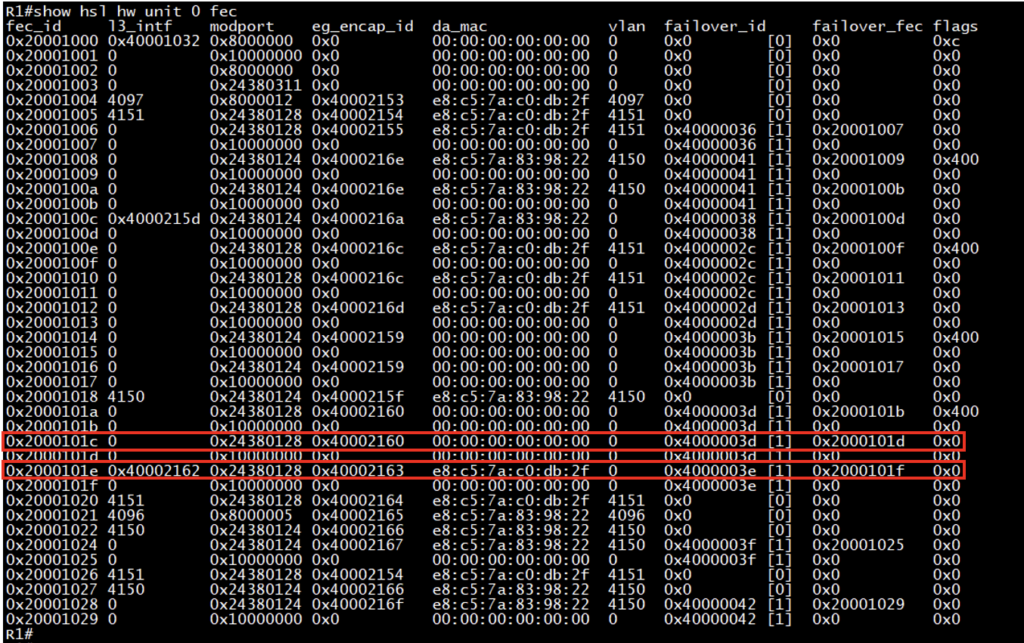
Ensures the presence of “fec” entries collected from previous steps.
Check the encap-db entries for respective FTN & ILM entries from above HSL output:
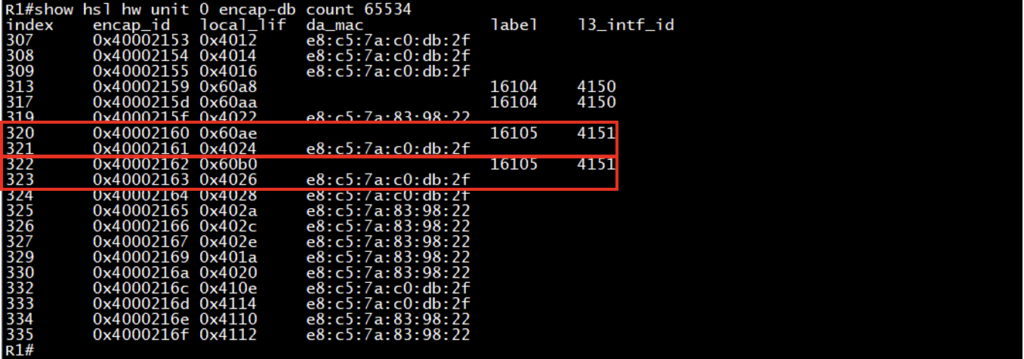
Ensures the presence of “lsp_encap” and “ll_encap” entries collected from previous steps for both FTN and ILM.
“lsp_encap” is to check the label mapping in hardware and “ll_encap” is ethernet/mac i.e. next-hop interface mac.
Conclusion:
IS-IS Segment Routing combines IS-IS protocol strengths with segment routing principles, simplifying network operations and enhancing scalability within IS-IS-based networks. Deploying IS-IS Segment Routing with OcNOS is straightforward, featuring simple implementation and validation through dedicated commands for efficient network management.
Next Topic: ISIS-SR with TI-LFA in OcNOS
To read Part 1 of this blog visit: Segment Routing (SR): Understanding the WHY, WHAT, and HOW IP Infusion
Contact us today to learn how OcNOS can offer Segment Routing for your network.

Suraj Kumar Singh is Senior Solution Lead at IP Infusion.

